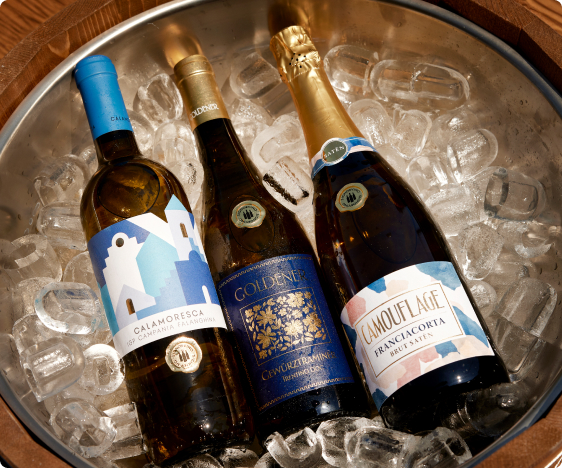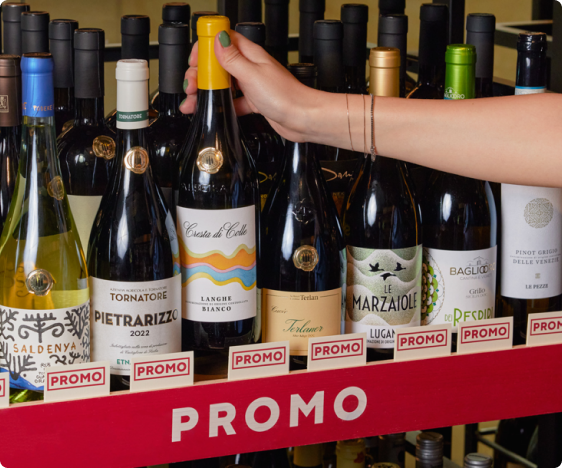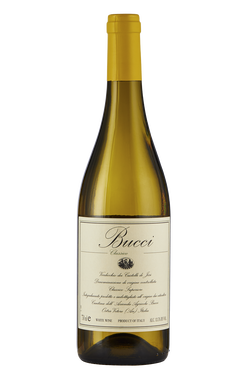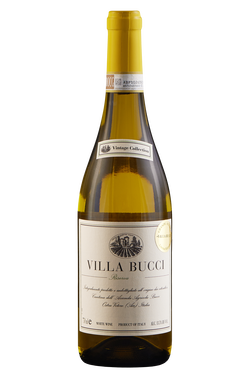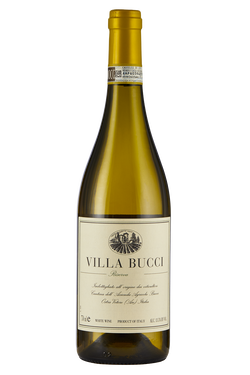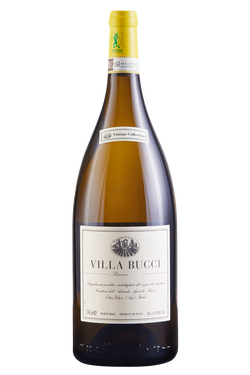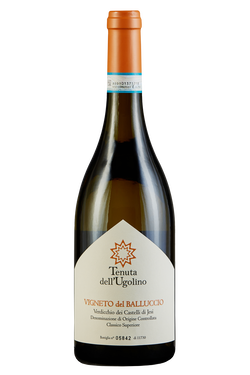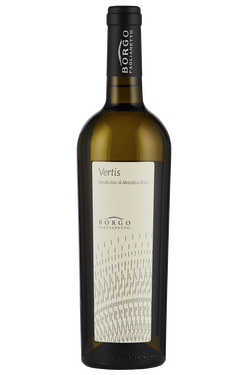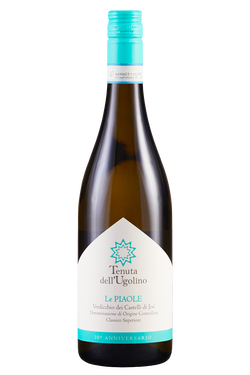- Wines >
- White wines >
- Verdicchio
The history of Verdicchio
Like that of many other important grape varieties in Italy, the history of Verdicchio is also mysterious and tumultuous. Although also widespread in Abruzzo, Umbria and Tuscany, Verdicchio’s past and present are linked to the Marche region more than anywhere else. There are two theories in particular which explain this. The first, supported by a major ampelographic study in 1991, claims that Verdicchio and Veneto’s Trebbiano di Soave and Trebbiano di Lugana are essentially the same variety. Verdicchio was in fact thought to have been imported into Marche in the second half of the 1400s by Venetian settlers called in by the municipality of Jesi to repopulate the area, devastated by a serious plague epidemic. According to the other theory, Verdicchio – or one of its ancestors – was already known and cultivated by the ancient Romans. The first evidence of a wine made from this variety in fact dates back to ca. 410 AD, and is linked to a curious story. It seems that Alaric, king of the Visigoths, who was responsible for the Sack of Rome, on his way the city, stopped in the Jesi area to stock up on Verdicchio. Alaric in fact claimed that nothing could give health and strength (sanitade et bellico vigor) to soldiers like this white wine from the Marche region. Whatever the origin of the variety, a fundamental stage in its history was the creation of the iconic amphora bottle in the 1950s, by the architect Antonio Maiocchi. The boom of Verdicchio, in the fifties and sixties, led to a lowering of the quality of the wine to satisfy growing demand. Fortunately, since the late 1960s, producers have devoted themselves to quality rather than quantity, and have managed to obtain extraordinary wines that have won numerous awards, including the world’s best white wine in 2011.
Characteristics of Verdicchio
Verdicchio, the most widely known of Marche’s white wines, has distinctive identifying traits. The variety displays medium-late ripening, high vigour, and regular to high yields. The sensory characteristics of Verdicchio are particularly linked to its terroir of origin and, despite being widespread in other areas of Italy, the variety tends to lose potency when grown far from its birthplace. In fact, the areas of Matelica and Castelli di Jesi have silty-clayey and limestone soils, low in organic matter but rich in potassium, which is responsible for Verdicchio’s elegant aromas. The temperature difference between day and night, and exposure to the sea breeze, on the other hand, are responsible for Verdicchio’s marked acidity. Verdicchio is particularly suited to the production of very fresh wines, to be drunk immediately, but, thanks to its high alcohol concentration, excellent structure and good acidity, Verdicchio lends itself very well to ageing. It has in fact been only in the last thirty years that experiments have begun with barrel ageing and late harvesting to obtain more potent wines, which nevertheless retain excellent balance. This is one of the most adaptable white grape varieties in Italy, and can be vinified in every possible way, from Metodo Classico to the Martinotti method, as a still wine aged in stainless steel or wood, or even in a noble rot version.
Verdicchio dei Castelli di Jesi and Verdicchio di Matelica: the differences
Verdicchio is found in the production protocols of two very important DOC wines, Verdicchio dei Castelli di Jesi DOC and Verdicchio di Matelica DOC, from the two homonymous areas. Both also have their own DOCG designation, namely Castelli di Jesi Verdicchio Riserva DOCG and Verdicchio di Matelica Riserva DOCG. Castelli di Jesi can also be produced in Classico – i.e. from its oldest production area –, Classico Superiore, and Classico Riserva DOCG versions. To distinguish between the two varieties, Castelli di Jesi and Matelica, the Istituto Marchigiano di Tutela Vini has established two parameters. First, regarding quantities: the area under vine of Verdicchio di Matelica is ten times smaller than that of Verdicchio dei Castelli di Jesi. The second concerns climate: Matelica is the only winegrowing zone in the whole of Marche that runs parallel to the Adriatic coast, cut off from the sea, resulting in a continental climate. This has led to a particular – in fact unique – selection of the variety, which has had to adapt to these different climatic conditions.
Pairing Verdicchio
Like all wines deeply linked to a particular territory, Verdicchio goes perfectly with typical Marche products and traditional dishes. It is also a particularly versatile wine, suited to various vinification methods, giving excellent results. For this reason, you may decide to accompany the various courses of a meal with different types of Verdicchio. For example, if you usually begin your meals with sparkling wines, you can start with a Verdicchio Brut and some olive all’ascolana, one of the best-known appetisers from the Marche region, or with ciauscolo, the typical salami of Umbria and Marche. For fish dishes, such as the highly traditional moscioli alla marinara, you can opt for a fresh young Verdicchio. Although one might think that, for a less ordinary occasion, such as Sunday lunch, it would be better to opt for a red wine from Marche, Verdicchio is so versatile that it can always amaze us. In fact, a Verdicchio Riserva is perfectly suited to accompanying richly-flavoured dishes, such as pasta and rice dishes with truffles from Acqualagna or Sant’Angelo in Vado, or the traditional vincisgrassi, the Marche version of lasagna. To finish off the meal with an excellent dessert wine, you can successfully pair a Verdicchio Passito with a selection of local pecorino cheeses, accompanied by honey and fruit compotes.
